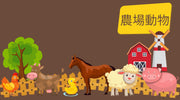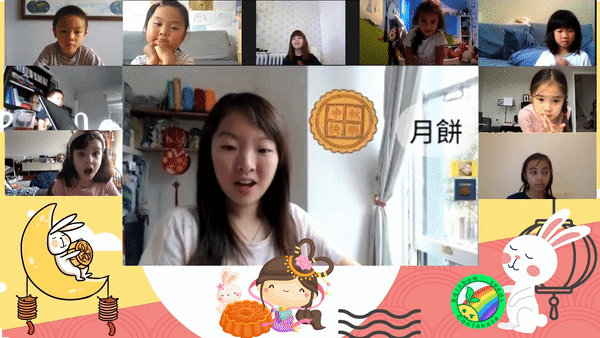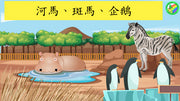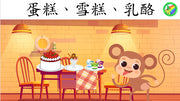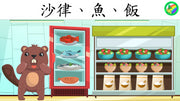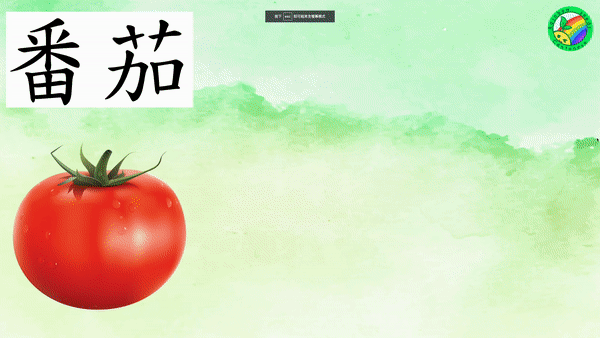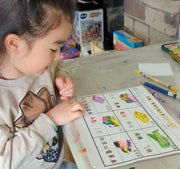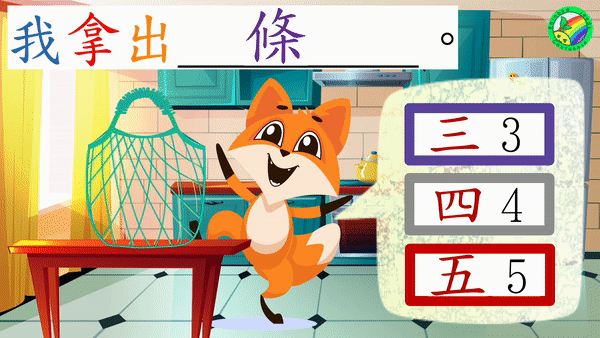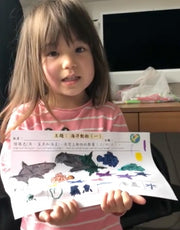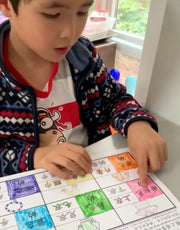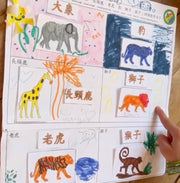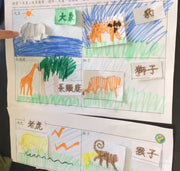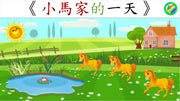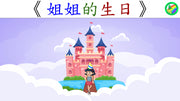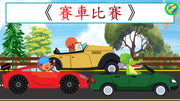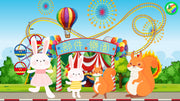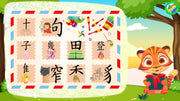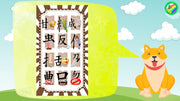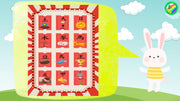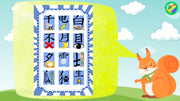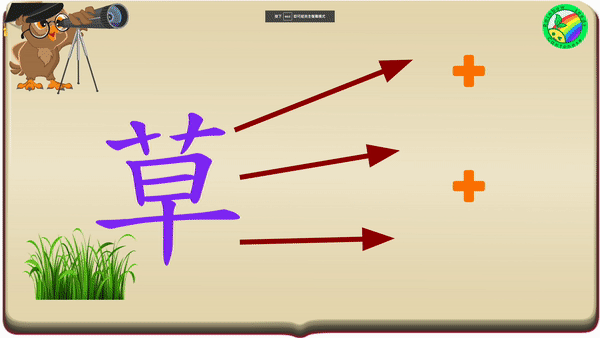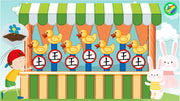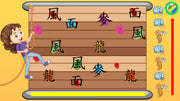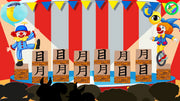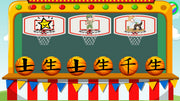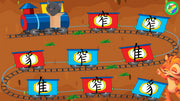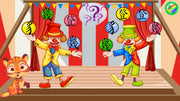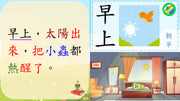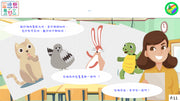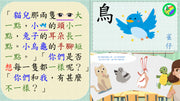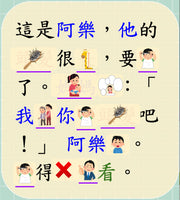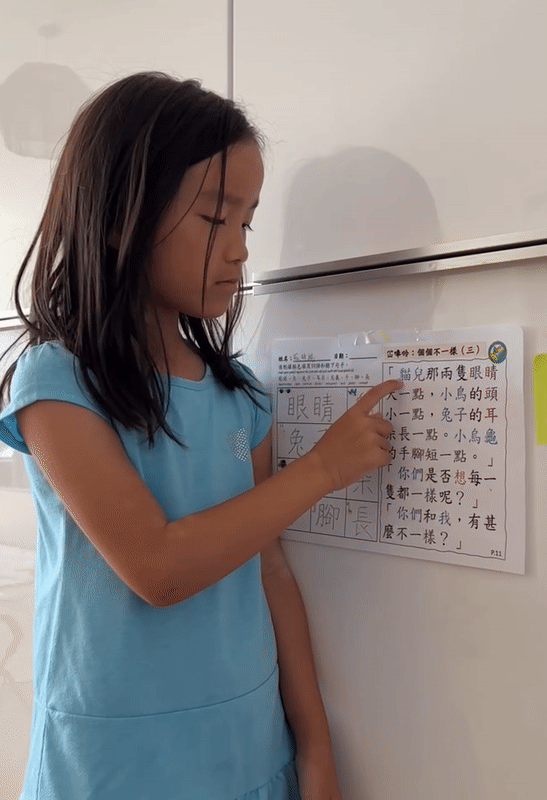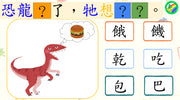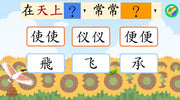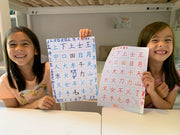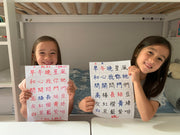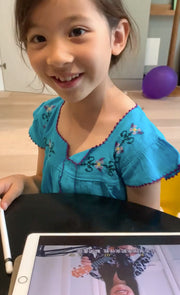
Every child is a language genius
Every child, whatever their background, can learn to speak, understand, read, and write Cantonese. It all comes down to the teaching methods used
Rainbow Seeds’ teaching approach is child-centred and based on learning through play. We provide children with sensory, real-life experiences that put Cantonese in context. Forget about traditional textbooks. We design and create our own unique teaching materials specifically for each class to make it fun and interactive.
We tailor our learning methods to the level of the class and the children's interests. We give them opportunities to be creative using the words and phrases they learn. Take a look at our storybook project, a collection of stories created by our students.
A comfortable learning environment is key too. We encourage you to stay for the class, so your child feels happy and confident. It also means you can pick up techniques to use at home to reinforce your child's learning.
Children also need human interaction to learn a language. Rainbow Seeds’ teachers trained as professional teachers in Hong Kong and follow the Hong Kong Kindergarten Education Curriculum Guide and Heep Hong Society’s Developmental Stages.
How we teach your children Cantonese
When children learn Cantonese, they first start listening and speaking. They then gradually develop reading and
writing skills.
We devised our approach from our experience and understanding of how bilingual children develop language skills,
and it is based on the
Hong Kong Kindergarten Education Curriculum Guide
and the
Heep Hong Society’s Developmental Stages. The age is a guide: the best class for your child will depend on their exposure and ability.

🤎 Seed Class (1 - 2.5 yrs)
Providing more exposure to Cantonese by fun, interesting interaction to excite interest
After finishing this class, your children should be able to understand the words learnt, follow basic
instructions from teachers, and say basic words after teacher.
Read more about class features below.
Suitable if your children:
▪ rarely ~ often speak Cantonese; and can:
- imitate you and say simple words such as ‘mum’, ‘dad’ or ‘eat’.
- understand simple instructions such as ‘give me’, ‘hand me’ or ‘put it back’.
- point out body parts such as eyes, ears, and mouth.
Magical Interaction
✔ To learn relaxedly and in fun
– Use of imaginative games to spice up and boost interaction in class
– Complement with actions and role playings to make words easier to understand
E.g. teacher acts like cutting and eating the mooncake, and all students are able to follow and enjoy
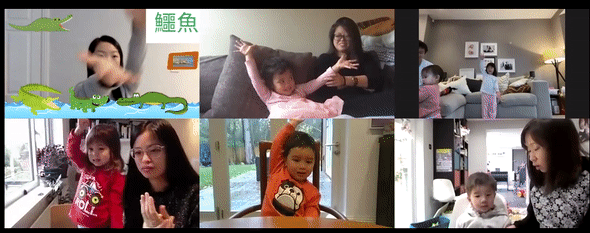
Stimulating Themes
✔ To encourage more speaking
– Intriguing sounds to arouse interest and enthusiasm
– Varying rhymes to practise listening and help keep pronunciation in mind
– Parent-child quality time together
🌱 Germination Class (2.5 - 4 yrs)
Learning vocabulary by around 6 topics, each with 24 words and 16 sentence patterns
After finishing this class, your children should be able to recognise simple words and say simple sentences.
Read more about class features below.
Suitable if your children:
▪ sometimes speak Cantonese; and can:
- say single words such as ‘want’, ‘eat’ and ‘play’.
- point out everyday objects such as ‘apple’, ‘bus’, ‘sun’.
- use adjectives such as ‘big’/’small’, ‘more’/’less’, ‘clean’/’dirty’.
Visualising Words
✔ To build foundation for word recognition at a later stage
– Visualisation of words to make it alive and stick in mind
– A mixture of practices to increase the impression of words, e.g. word games, worksheets, etc.
– No pressure to write and remember the words, but just to give them an idea this is how Chinese
words look like
Useful Sentence Patterns
✔ To learn making sentences step by step
– Making use of short, common sentence patterns with the words learnt
– Teaching of colours, numbers and quantifiers essential for enriching sentences
– Diverse activities to help distinguish the differences between written and spoken form
From Learning Words to Building Sentences
✔ To learn with structure
– Two lessons learning new words and sentences, followed by a review, then a story session to
connect all words together
– Classwork to practise making sentences with new words
– Multiple students selected to record their sentences as a story on YouTube for everyone as an
example
🌿 Sapling Reading Class (3.5 - 5 yrs)
Learning to read, 4 stories a term, focusing on the keywords in the story each with 9-12 keywords
After finishing this class, your children should be able to make sentences with a variety of words and read
out stories.
Read more about class features below.
Suitable if your children:
▪ often speak Cantonese, but rarely read; and can:
- repeat short two-word sentences after you such as ‘drink orange juice’, ‘riding in the car’, ‘wearing a
shirt’.
- say the name of everyday objects such as ‘table’, ‘pen’, and ‘water’.
- understand yes/no questions such as: ‘are there any?’, ‘are you happy?’ and ‘do you like it?’.
Visual Picturisation
✔ To start recognising words
– Saying the words through visual hints, boosting their confidence in word recognition
– Unique vocabulary cards drawn by themselves, deepening their understanding of the words and
helping them to review
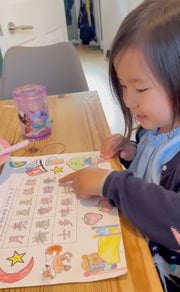
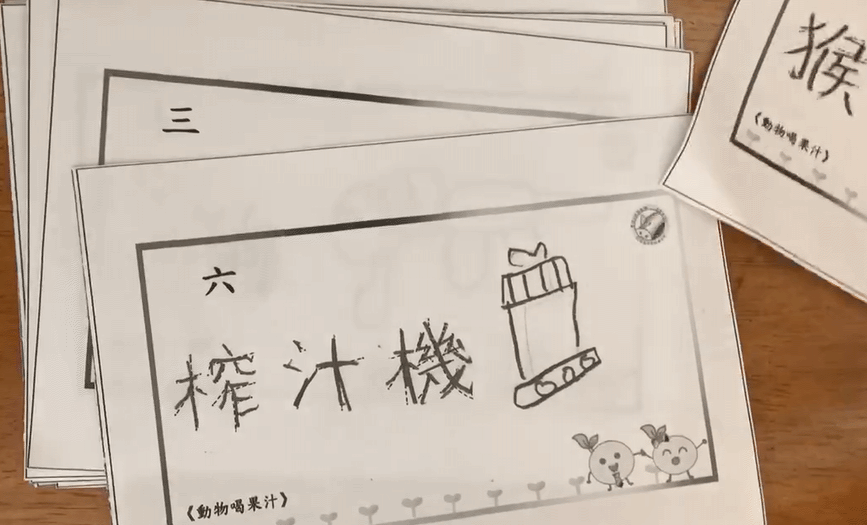
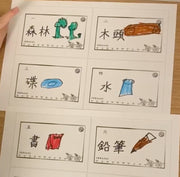
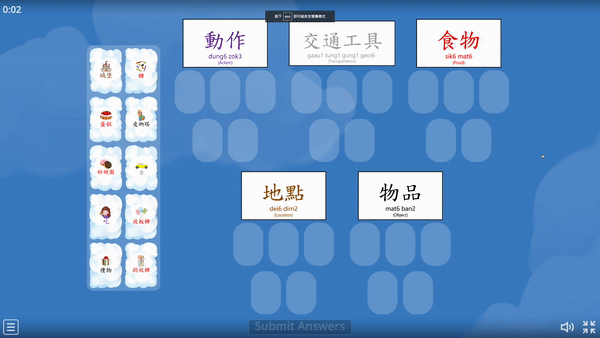
Categorising Words
✔ To gain better understanding of words
– Categorising keywords learnt in stories into foods, animals, actions, etc.
– A series of captivating games for practice and review
Cultivating Creativity
✔ To create and describe their own stories using words learnt in class
– Brainstorming together in class from multiple angles to allow them to finish their own stories
back home
– Platform provided to share and watch each other's stories, keeping them enthusiastic to learn
from other brilliant ideas
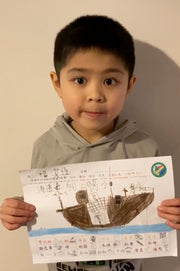
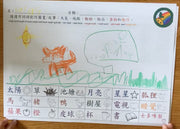
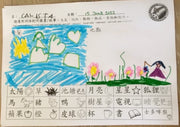
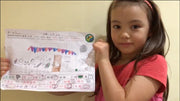
🌿 Sapling Writing Class (4 - 6 yrs)
Learning the structure of words by breaking it down into basic Chinese character components and radicals
After finishing this class, your children should be able to tell basic Chinese character radicals and
components and follow the stroke order of Chinese writing.
Read more about class features below.
Suitable if your children:
▪ sometimes speak Cantonese and read; and can:
- repeat short two-word sentences after you such as ‘drink orange juice’, ‘riding in the car’, ‘wearing a
shirt’.
- say the name of everyday objects such as ‘table’, ‘pen’, and ‘water’.
- understand yes/no questions such as: ‘are there any?’, ‘are you happy?’ and ‘do you like it?’.
Entertaining Writing Introduction
✔ To introduce the basics of Chinese writing
– Fun, interactive activities to learn about 80 basic Chinese character radicals and components,
enough of putting together over 200 words
– Engaging presentations to teach fundamental Chinese writing skills like basic strokes, stroke
order and direction
Breaking Down Characters
✔ To learn the basic structures of characters
– Detailed illustrations with pictures to break down characters into Chinese radicals and
components
– Using words learnt in Reading class as the basis to deepen their understanding
E.g. "伯" is formed by "人" and "白", hence learning three words at once
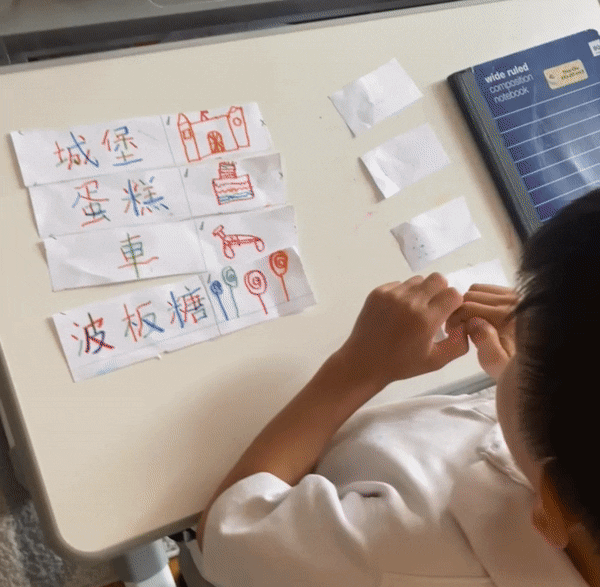
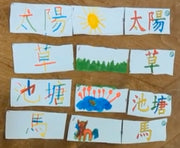
Colorising Words
✔ To reinforce the knowledge of words
– Worksheets for writing words in four colours based on stoke order and components respectively
and drawing out its meaning
– Effective records retaining vocabulary learnt without the need of substantial copying
– Word matching game using their own unique cards to review from time to time
🌴 Little Tree Class (6 - 8+ yrs)
Learning by stories with studying 1 storybook from
Hambaanglaang
each term
After finishing this class, your children should be able to read and make sentences easily.
Read more about class features below.
Suitable if your children:
▪ often speak Cantonese, read and write; and can:
- say short two-word sentences, such as: ‘I am eating vegetables’, ‘I am washing feet’, ‘I am buying
books’.
- use conjunctions such as and, then, so.
- understand simple riddles such as ‘which fruit is green but also red?’
HBL's Stories
✔ To distinguish the differences between spoken and written form
– Simple stories relating to daily life written in spoken form, allowing for improving
conversation while reading
– HBL's books are created based on word frequency, ensuring ease of use with high, varied
repetition
– Teaching page by page both the spoken and written form of the story
Progressive Reading
✔ To read paragraph level by level
– Keywords to focus on every page accompanied by a vocabulary card with both written and spoken
form and a picture to help understanding
– Replacing words with pictures in a paragraph, reducing their fear seeing loads of words and
letting them know many words are actually already familiar to them
Reexamining Word Structure
✔ To strengthen understanding of writing
– Words showing the stroke order in number for them to follow
– Hiding the component they already know in a word, allowing them to review and know how to
build a word
– Activities to find the correct words amongst words that look very alike
Reinforcing Vocabulary
✔ To build more vocabulary on top of previously learnt words
– Various fun yet challenging online games attracting them to review in their free time
– Grouping words with very similar meanings together in a question to make sure they understand
them all
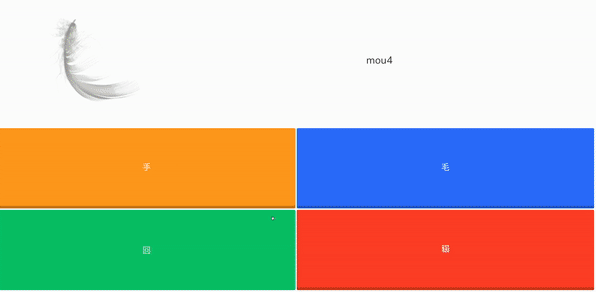
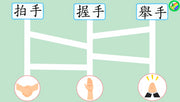
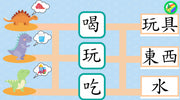
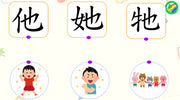

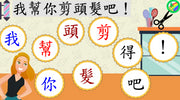

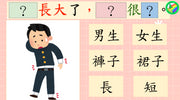
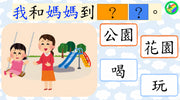
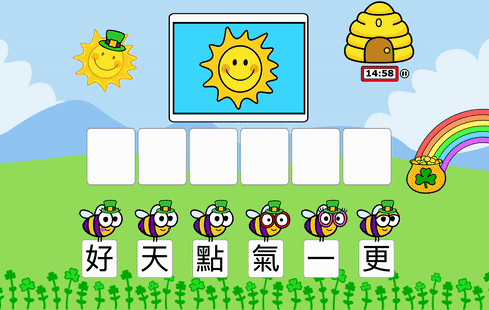
Fixing Sentences
✔ To be able to express themselves in sentences
– Building the sentences by finding out and matching the words
– Finding the correct words to match the meaning of the picture
– Games for fixing the sentences, where they can find the answer in the classwork in case they
forget
Expanding Vocabulary
✔ To understand multiple meanings of a word
– Teaching relating vocabulary containing the same word, apart from just the words in the stories, encouraging making connections across varying words and forming different words

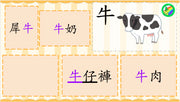
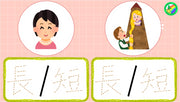
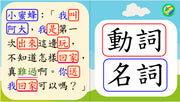
Introducing Word Types
✔ To deepen understanding of the characteristics of words
– Introducing antonyms to effectively improve vocabulary in combination
– Introducing parts of speech to make sense of a sentence and grammar
Tree Class (8+ yrs)
Basing on primary school curriculum used in Hong Kong
*Now only available for
private
classes
Find out more about our private classes on our
Facebook page.
Suitable if your children:
▪ often speak Cantonese; and can:
- understand abstract words such as ‘past’, ‘Wednesday’, ‘today’.
- tell you about experiences they have had such as ‘I have ridden in a carriage’, ‘there are a lot of
toys in the house’ and ‘my sister takes good care of me’.
- retell simple stories.
What our parents say about Rainbow Seeds
Over 50 bilingual families in London have chosen Rainbow Seeds to support their child’s Cantonese learning. With our parents’ continuous support and encouragement, we’ve made excellent progress. Here is what some of our parents say about Rainbow Seeds:
Ms Ceci is a nice teacher and her teaching is engaging and fun for kids. Her methods allow children to remember Chinese characters easily. There is a good balance of fun games, music and learning in the class.
I highly recommend Ms. Ceci Pang and her teaching methodology. She has been teaching my twin girls since they were about 2 years old (now 3.5 years old) and we have seen significant progress. Her classes are fun and creative.
I have seen a vast improvement and progress in my children’s Cantonese speaking and vocabulary – this has also been highlighted by family members.
Learning Cantonese through play, unlike typical classes in London. Fun and interactive, covering daily life topics. Best way to learn. We couldn't recommend enough.
My son is only 3.5 years old and she manages to keep him engaged and interested even though our lessons are online, which is very difficult to do. She has loads of ideas to make learning fun and she adapts quickly if something doesn't work as expected, by changing the activity or trying a new way to present a topic.
Read more on our Facebook page.
Join us Now!
